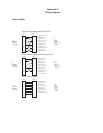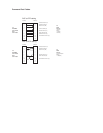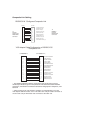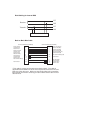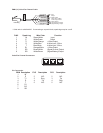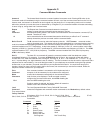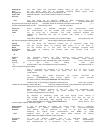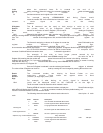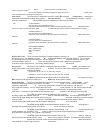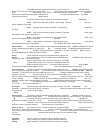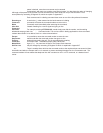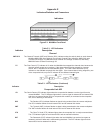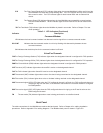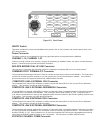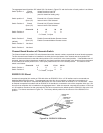13 DATA Command modem connected as data
modem during auto answer.
You can also choose to completely eliminate the display of all of the Result Codes.
This is accomplished by executing the Q command.
View Active The View Active Configuration and User Profiles &V command Configuration displays the
commands and S-Register settings along with the and User Profiles stored telephone numbers. A typical
example of active and stored profiles and stored telephone numbers are as follows:
&V ACTIVE PROFILE:
B1 E1 H0 Q0 V1 X4 Y0 &G0 &P0 &T4 &Y
S00:000 S01:000 S02:043 S03:013 S04:010 S05:008 S06:002 S07:030 S08:002 S09:006
S10:014 S12:050 S14:AAH S16:00H S18:000 S21:00H S22:76H S23:07H S25:005 S26:001S027:40H S28:00H
STORED PROFILE 0:
B1 E1 H0 Q0 V1 X4 Y0 &G0 &P0 &T4
S00:000 S14:AAH S18:000 S21:00H S22:76H S23:15H S25:005 S26:001S027:40H
S28:00H
STORED PROFILE 1:
B1 E1 H0 Q0 V1 X4 Y0 &G0 &P0 &T4
S00:000 S14:AAH S18:000 S21:00H S22:76H S23:17H S25:005 S26:001S027:40H
S28:00H
TELEPHONE NUMBERS:
&Z0= 18009722439
&Z1= 6127859875
&Z2=
&Z3=
Wait for Dial Tone The W command causes the command modem to wait up to a specified time for the
dial tone to occur. The telephone number W is dialed immediately upon dial tone detection. The S-Register
S7 value determines the maximum wait time. If a busy signal is detected instead of dial tone, the
command modem returns a BUSY result code and goes On-Hook, abandoning subsequent
instructions on the command line. The factory default setting is 30 seconds
Store Active The Store Active Profile &W command writes the storable Profile parameters of the
active configuration to one of two profiles in NVRAM. The current values of the following commands and
&W0-1 registers are stored:
Commands: Bn, En, Qn, Vn, Xn, &Gn, &Pn, and &Yn
S-Registers: S0, S14, S18, S21, S22, S23, S25, S26, S27, and S28
The &W0 command stores the active profile in the NONVRAM at location zero and
&W1 stores the active profile in location one. &W0 is the factory default setting.
Result Code Set/ The Result Code Set/Call Progress (X ) command selects which Call Progress set of
responses and dialing functions are active in Command mode. You can choose to have certain
responses suppressed, X such as the speed of the connection, and whether or not dial tone and
busy signal are detected. You can choose either the basic result code set (i.e., the connect response with
no speed indication of the called command modem) or the extended result
code set (i.e., connection response with speed indication) and whether or not call progress is activated.
The ATX0 and ATX1 commands disable the call progress functions (dial tone
and busy signal) and activates either the basic or extended result codes. This call progress method is
referred to as dumb dialing where actual dial tones are not detected, instead the command modem
relies on timed pauses. The ATX0 enables the basic result codes while the ATX1
enables the extended result codes with call progress disabled on both commands.
The ATX2 through ATX4 commands determine whether or not call progress is
activated and extended result codes are enabled on each of these commands.
The ATX2 command waits for a dial tone before dialing. The connect response and
speed indication (e.g.,CONNECT xxxx where as xxxx is the connect speed of 2400 bps) are enabled
upon detection of a dial tone. Busy signal is not detected.
The ATX3 command causes the command modem to dial blind(i.e., does not
wait for dial tone) and enable a BUSY result code if a busy signal is detected. This feature is useful because
it allows the command modem to immediately abandon a call rather than wait the
thrity seconds for a carrier signal that will never come.



